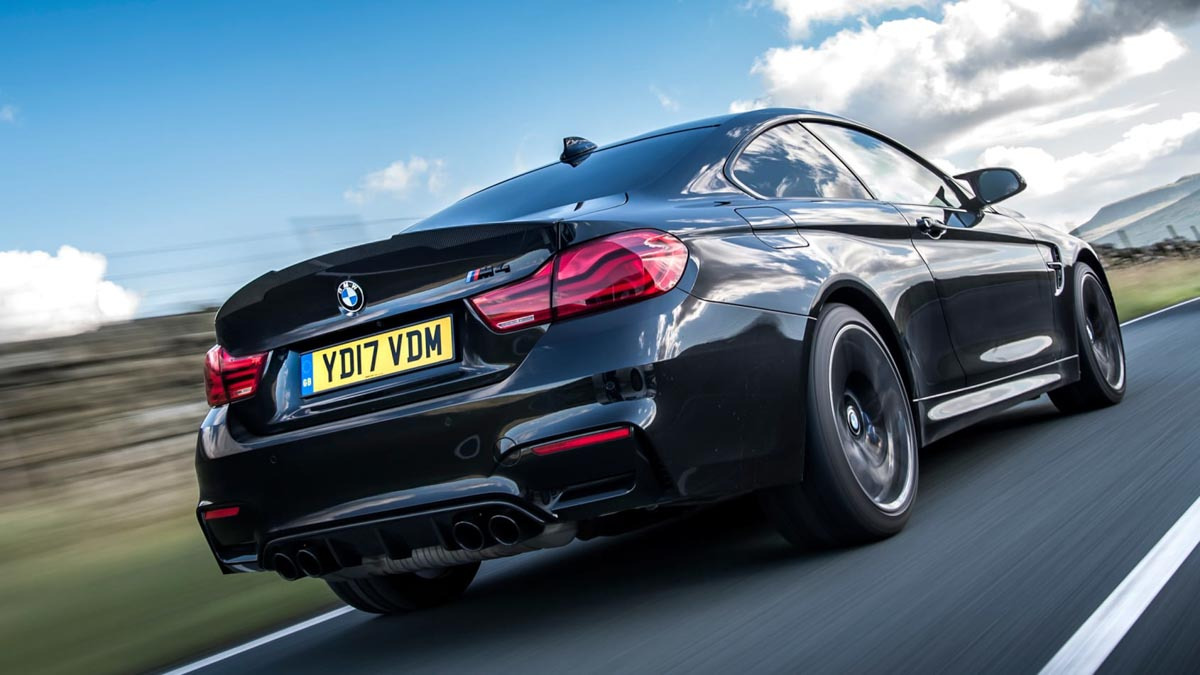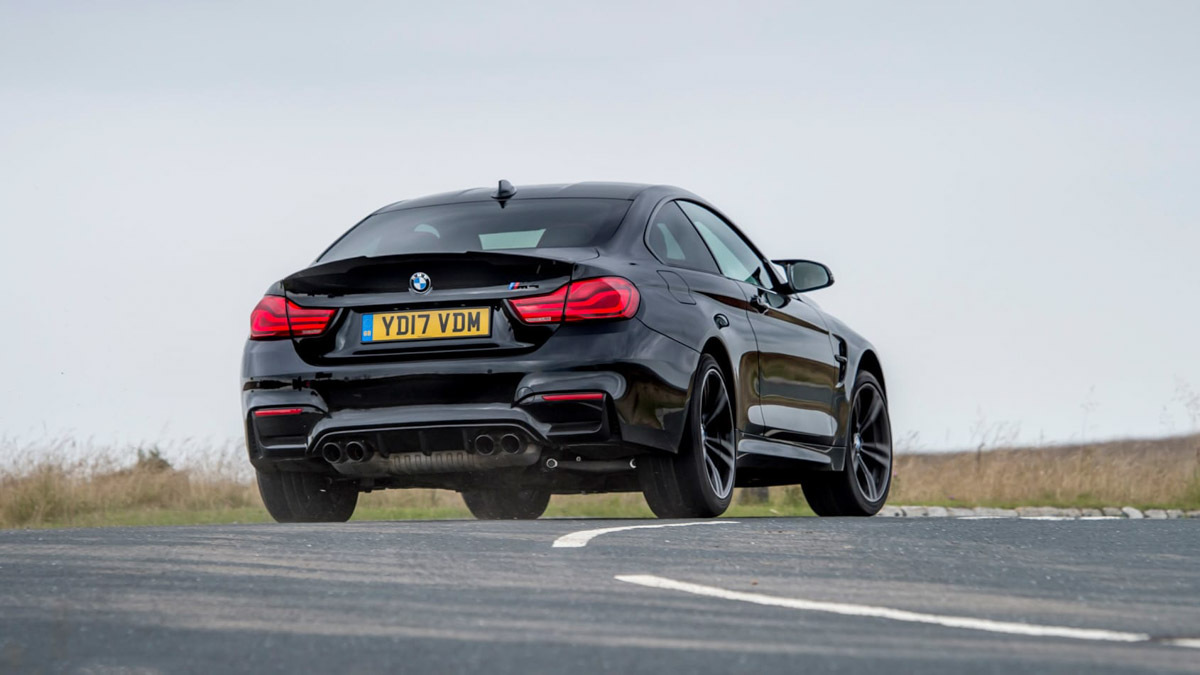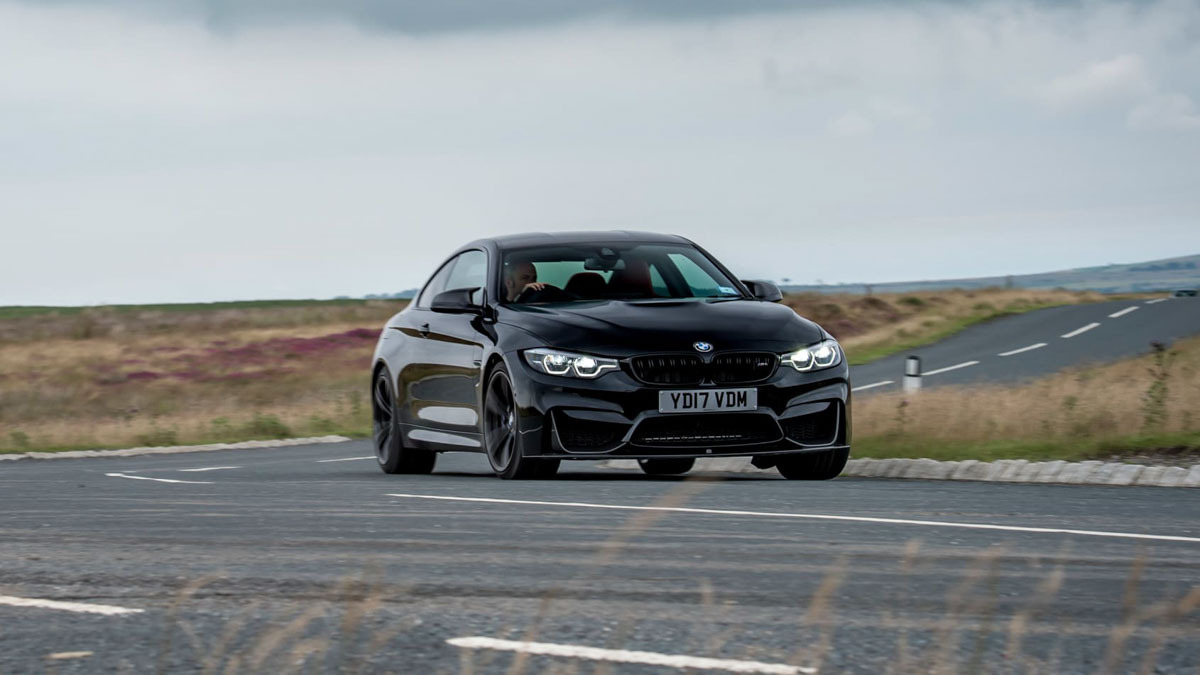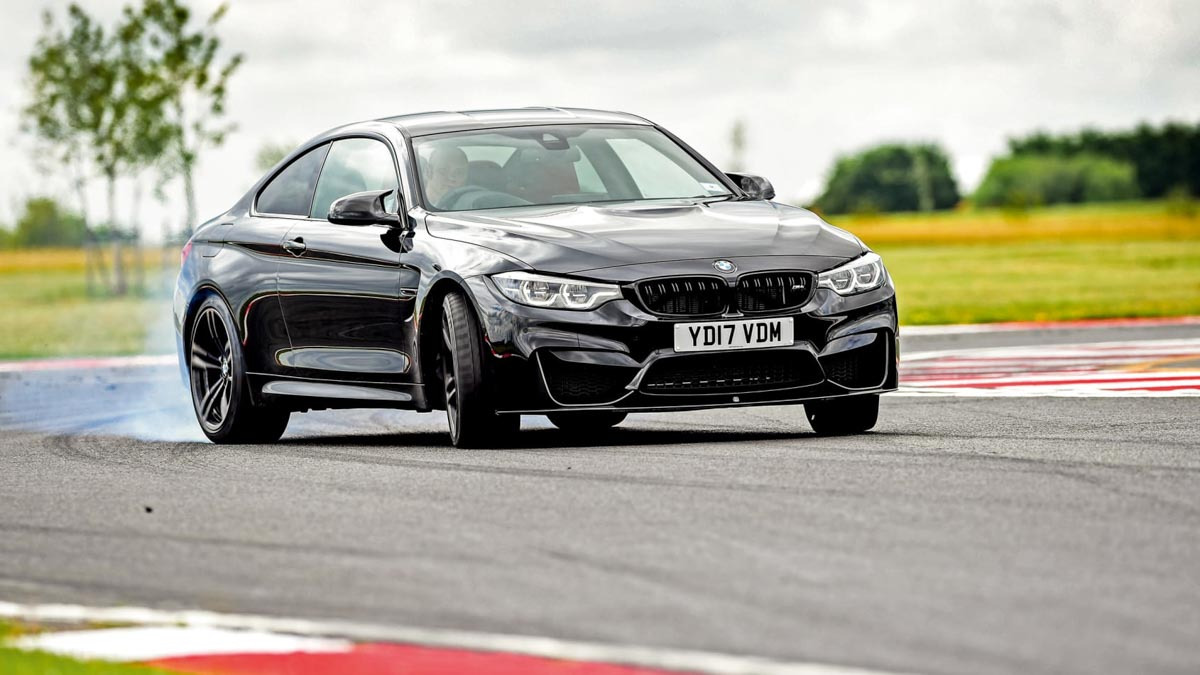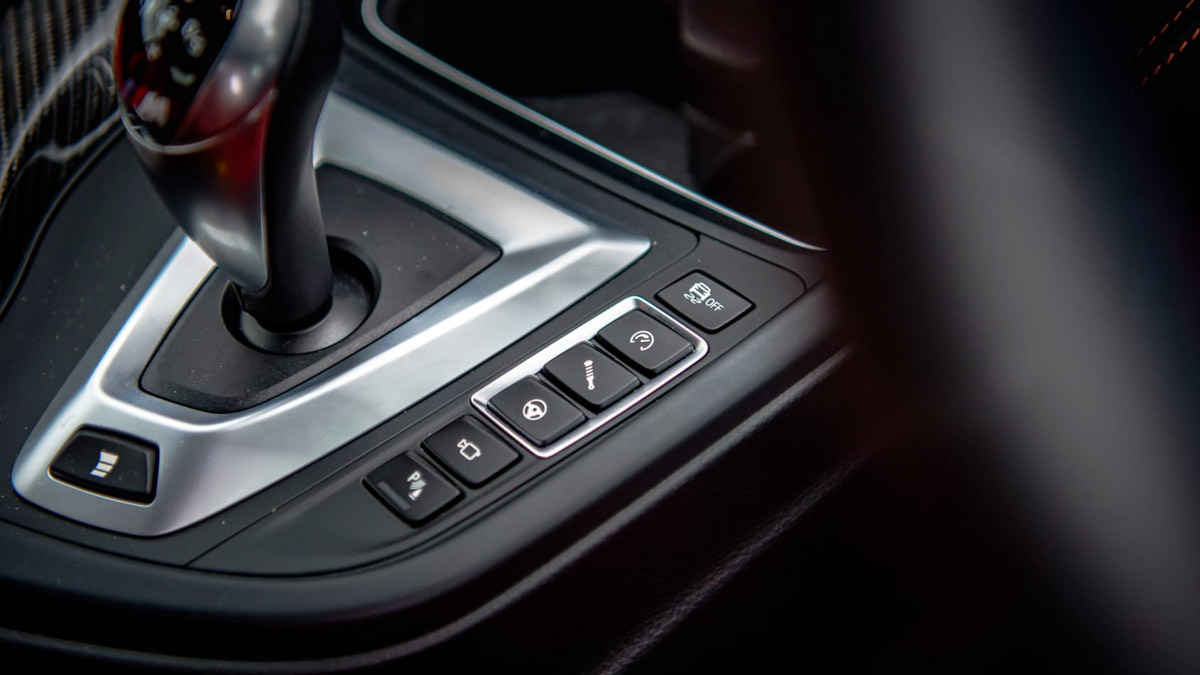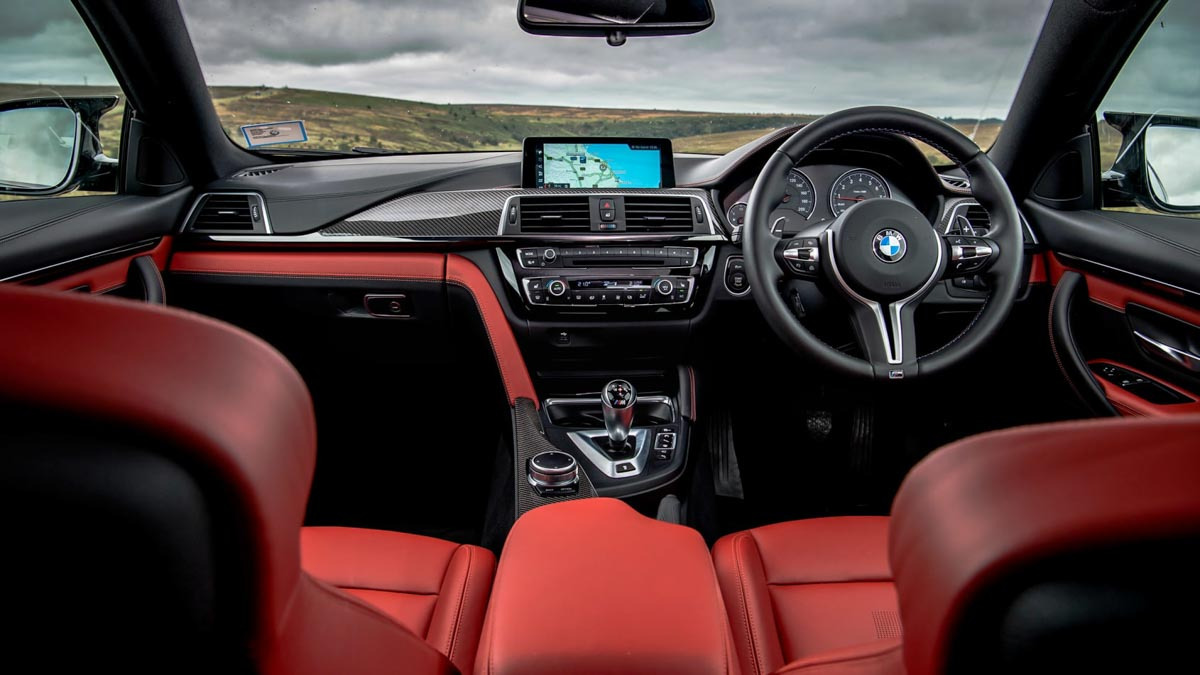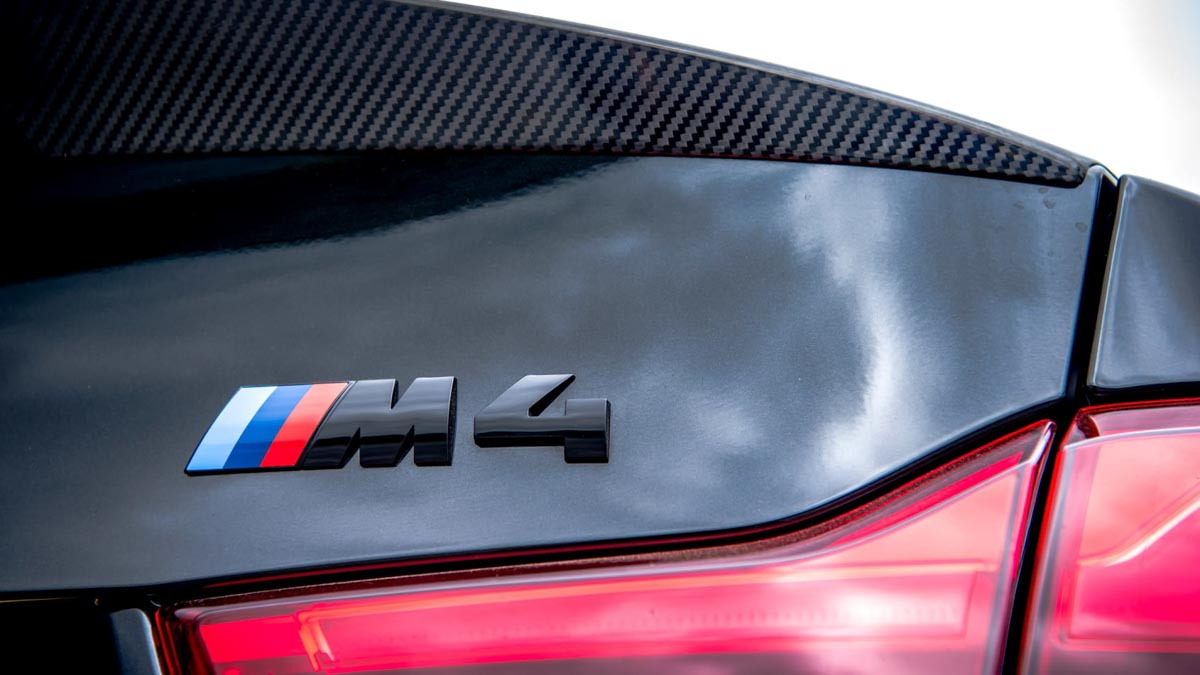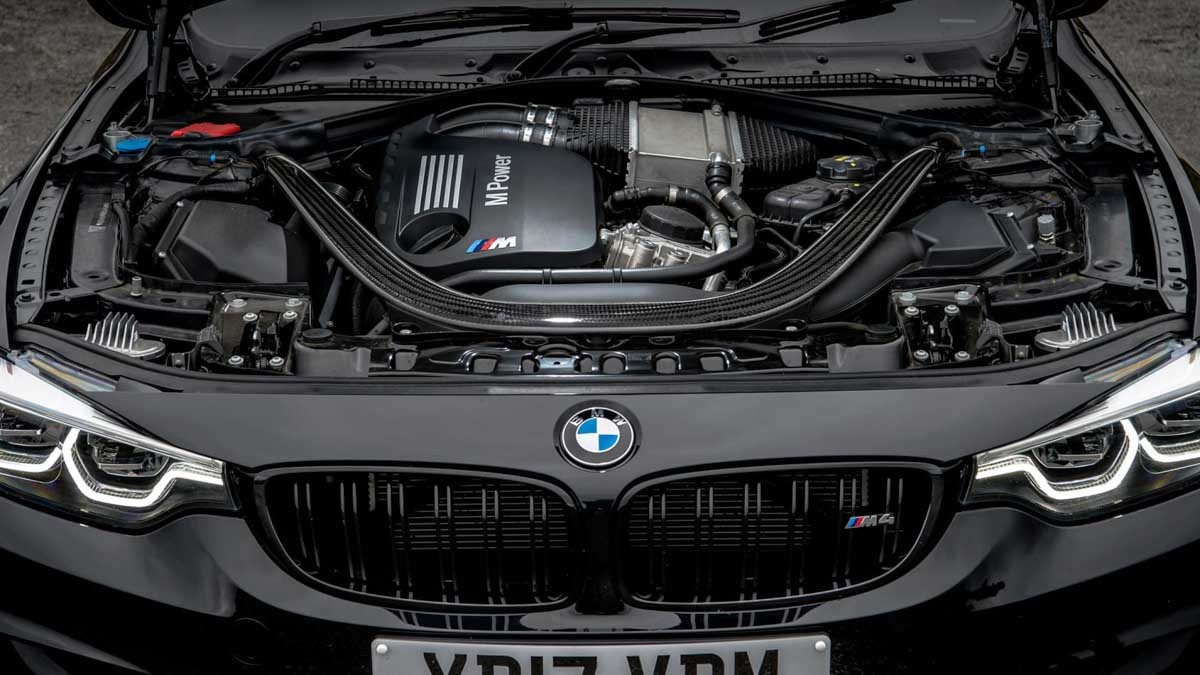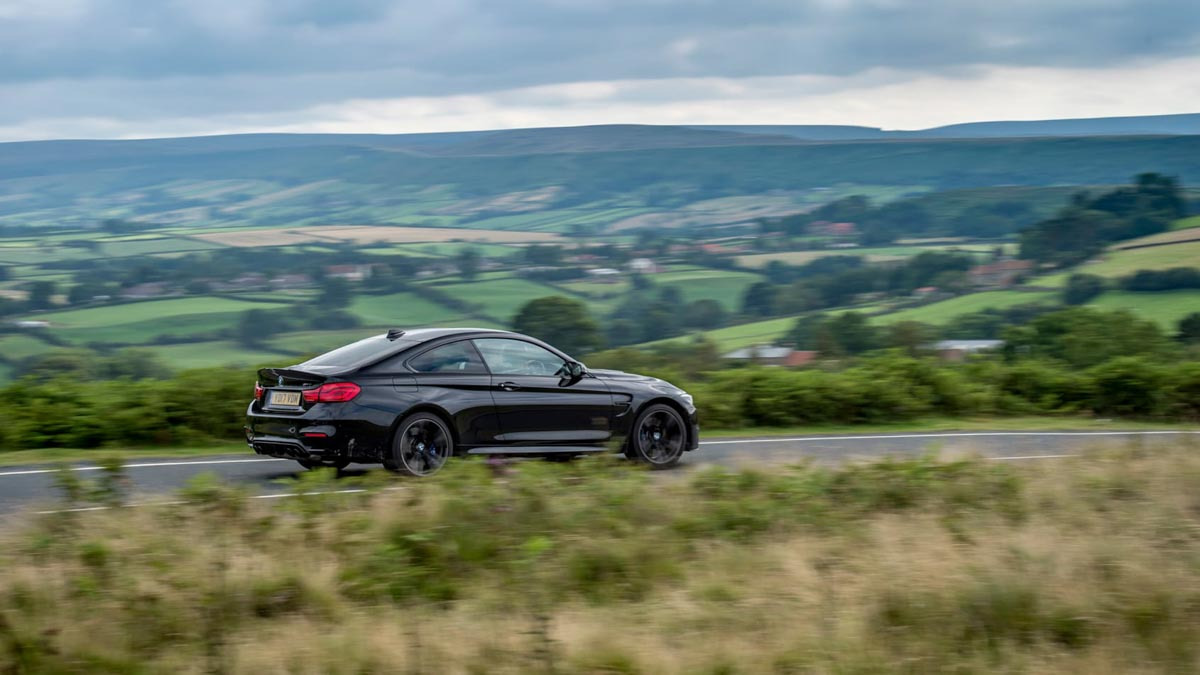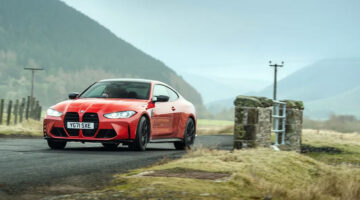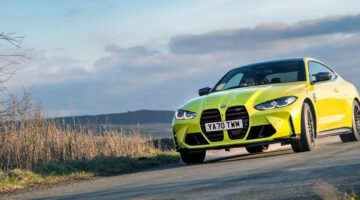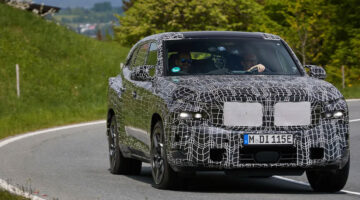In the face of talented rivals, the M4 remains a solid, sophisticated option for keen drivers
| Serious straight line performance, styling, dry-weather handling | |
| Very tricky in the wet and over challenging roads |
PRICE from $82,395
This is BMW’s first M4, the result of a convoluted new naming strategy it has employed across its model range, but be in no illusion that in the saloon-based performance coupe sphere, BMW doesn’t only know how to play the game, it pretty much created it.
So when BMW launched the M4 back in 2014, its mixed reception didn’t so much come as a surprise, but rather bewilderment about what could have possibly gone wrong. Since then, the M4 (and its four-door M3 sibling) has undergone multiple revisions, as well as been diversified into the excellent, but eye-wateringly expensive CS and lesser Competition Pack options.
Equipped with the same 3-litre twin turbocharged straight-six from its initial launch, the M4’s speed has never been in doubt, but has BMW been able to reintegrate the finesse which helped define its illustrious forbears? There is no quick way to describe how the M4 drives – suffice to say it could never be described as dull or benign.
The M4’s complicated reception has not only been affected by its reputation either, because where previous M3s largely had their corner of the market to themselves, the M4 most certainly doesn’t, with the charismatic Mercedes-AMG C 63, Alfa Romeo Giulia QV and Audi RS5 all raising their game for class honours.
So does the M4 still deserve its place at the top of its mount, or has the king been dethroned? Read on to find out.
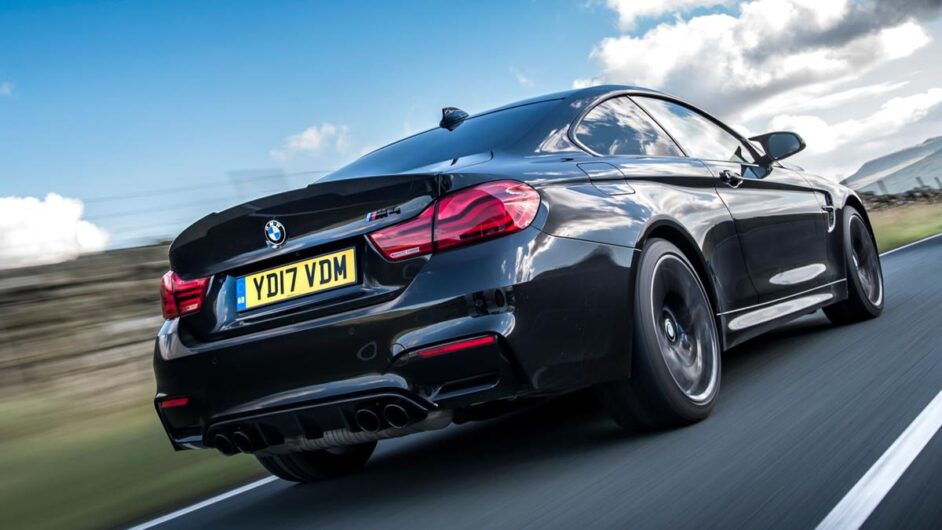
Prices, specs and rivals
Prices for the non-Competition M4 start from $82,395 for the coupe, rising to $87,975 for the convertible. Should you be heavy-handed with options though, prices can easily exceed $92,000 for both; carbon ceramic brakes alone add $8265, for example, while adaptive LED headlights cost $1600. The Competition Package adds another $4000 over the standard car.
If you’re looking to buy an M4, you might have been advised to opt for the $3564 DCT automatic gearbox purely for residual value. We’re not so sure ditching the standard-fit manual is a wise move, though, nor do we think it will necessarily help with resale value.
Move up from the standard and Competition Pack variants and you’ll find the $117,878 M4 CS, a car that replaces the extreme GTS as the range-topping model. Though it’s not limited in numbers like the M4 GTS, the M4 CS is harder to source than the standard car. Under the skin, Munich’s finest engineers fettle the coupe to be the best driving machine possible, whilst retaining the ability to drive it everyday, unlike the hardcore GTS.
The price and performance of the M4 put it squarely in line with the likes of the new C63 AMG, Audi RS5 and the Lexus RC-F. Arguably, the M4 is a different ownership proposition to all of them, being a more raw and hard-edged car. But these M-cars lack some of the drama that their rivals offer.
Plenty of track testing with the M4 reveal that the carbon ceramic brakes are fantastic, but perhaps not an option worth ticking unless you intend on driving the M4 frequently on track.
In pure specs terms however, the M4’s standard offering perhaps bests its rivals. iDrive remains one of the best in-car entertainment systems you can get, while the special M-Sport seats are nice to look at and fantastically supportive and comfortable.
Alfa hasn’t pulled any punches with its new Giulia. The Quadrifoglio comes with a carbonfibre prop shaft, torque vectoring, adaptive dampers, a carbonfibre bonnet and front splitter, as well as optional carbon ceramic brakes. The Alfa Romeo’s interior looks special, even if it doesn’t feel very premium. There are several touches clearly lifted out of the Ferrari rule book, including big aluminium shift paddles and an engine start button on the wheel.
To drive, the Giulia feels progressive and engaging, while the engine remains exciting right the way to its 7000rpm redline. It also puts out a sound that’s easily on par with the M4, but not quite a match for the C63’s turbocharged V8.
Performance and 0-100 time
The latest generation M3 and M4 are very quick cars indeed. In our own testing the car managed to crack 160kph in just 8.6 seconds, which makes it as quick as a Ferrari 430. Cars equipped with optional DCT gearboxes can hit 100kph from a standstill in just 4.2sec according to BMW’s own official figures. Although the six-speed manual version will reach 100kph in 4.3 seconds, and so puts it slightly behind the DCT model in acceleration terms, it still remains a deeply respectable figure for a 1595kg, rear-wheel drive car.
BMW claim the lighter, more powerful M4 GTS wearing Michelin Pilot Sport Cup 2 tyres can reach 0-100kph in 3.8sec. However, we recorded an even quicker time of 3.7sec and 0-160kph time of 7.8sec.
While bhp figures might not be as considerable jump as you’d expect over the old E92 M3 coupe, the acceleration figures are definitely a cut above. The old, naturally aspirated M3 coupe for example took 10.3 seconds to hit 160kph according to our timing gear.
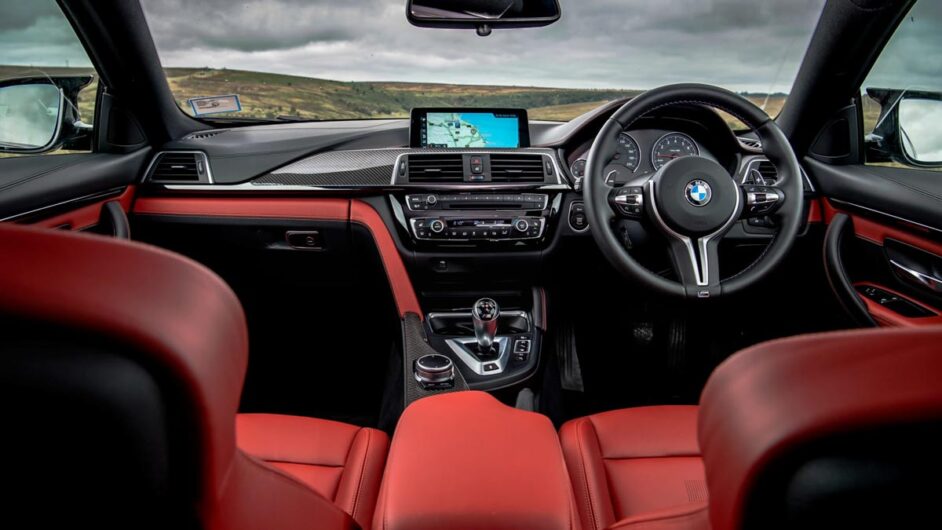
A sophisticated launch control system – which the driver can adjust to suit the grip levels – helps the new car to get away from the line as quickly as possible every time.
Top speed is electronically limited to 250kph in all versions except the GTS which is limited to 305kph.
The latest generation model might have lost the previous versions’ soulful, high-revving V8, but the switch to turbocharging has lifted it to a new realm of performance. With considerably more torque the new model is not only faster off the line, but significantly more accelerative through the gears, too, which makes it feel much faster in real-world use.
Engine and gearbox
Codenamed the S55, the 3-litre twin-turbocharged straight-six found in the current generation M4 puts out 424bhp, just an 11bhp increase over its predecessor, the M3 coupe. The big jump for the turbo’d motor over the old naturally aspirated V8 in the is in torque, which is up from 295lb ft at a peaky 3900rpm to a mighty 406lb ft from just 1850rpm.
As such, real-world straight-line performance is drastically improved, although the free revving nature and spine-tingling soundtrack of those motorsport-inspired engines in M-cars of old has been lost.
Equipped with Competition Package, the M4’s power increases by 20bhp to 444bhp but peak torque stays the same. The extra power doesn’t dramatically change the attitude of the engine and, as the standard car’s performance is so strong, you don’t really feel the effect either. The Competition Package makes changes to the chassis too, and that’s where real improvements can be felt.
Where BMW deserves credit is in the work it has achieved with turbocharging. This engine is among the very best performance car turbo engines currently on the market. It boasts sharp throttle response and a willing top end. It easily can compete with the highly impressive ‘Hot V’ engine found in the C63 AMG and AMG GT.
In an effort to recreate some of that emotional engagement, BMW augments the sound of the new turbo engine by using the speakers within the cabin. The result, unfortunately, is not entirely convincing.
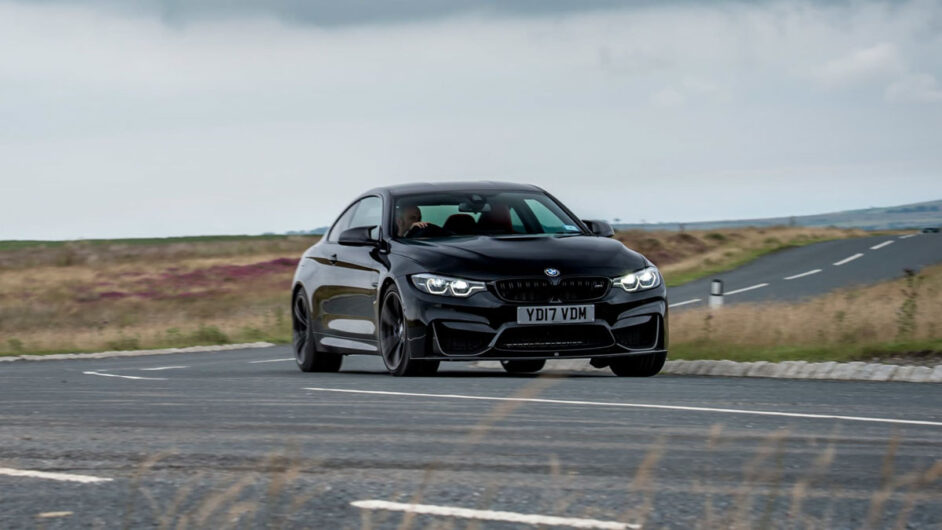
BMW offers buyers the choice between a six-speed manual gearbox and a seven-speed twin-clutch DCT unit. At a time when many manufacturers seem to be killing of their manual transmissions it’s great to know that M4 buyers can still opt for a stick and a pedal – although very few of them actually will.
The DCT ‘box is very effective, both in manual and auto mode. It can be a little clunky when left to its own devices, particularly when cold, but shifts are generally smooth and quick. In manual mode they bang in with a real intensity, responding immediately to the driver’s tweaks of the steering wheel-mounted paddles.
We do have some concerns over the way the drivetrain reengages, though, especially when shifting from third to fourth gear under full throttle load. When the new gear comes in, the torque delivery is so quick and abrupt that it can upset the rear axle and cause the tyres to break traction.
The M4 GTS’s engine is fundamentally the same as the standard M4’s, however, it makes 493bhp from its 2979cc straight-six thanks to the help of a water injection. The system alone doesn’t add horsepower, what it does is spray atomized water into the inlet to cool the gases and therefore allow even higher boost pressures which does increase power. The standard car’s water-to-air intercooler allows for a boost of 2.2bar, whereas the water injection allows the GTS’s boost to increase to 2.5bar.
Ride and handling
BMW has worked very hard to keep the weight of the M4 as low as possible – the prop shaft, for instance, is carbon fibre, as is the roof panel and bootlid. The resulting kerb weight of 1595kg is some achievement, then, particularly when you consider that the Lexus RC-F – a direct rival – weighs in at 1765kg.
The result is that the M4 feels alert, agile and responsive. There is so much grip across the front axle that it seems nigh impossible to get the thing to understeer – that gives the car enormous cross country pace. The steering is electrically-assisted rather than hydraulic, as is the way in the industry these days. The consequence is that some of the detailed feel that previous M-car coupes possessed has been lost, but this new system is at least crisp and very precise.
In dynamic terms, this is a complicated car. On dry, relatively flat roads it really is no less than superb, with agility, grip and on-throttle adjustability to spare. With the stability control knocked into its intermediate M Dynamic Mode (MDM) you can enjoy the car’s finely-balanced and exploitable chassis without throwing away the safety net altogether. Naturally, with the systems fully off it will execute the most impressive oversteer slides, but not before you have grown accustomed to the aggressive torque delivery.
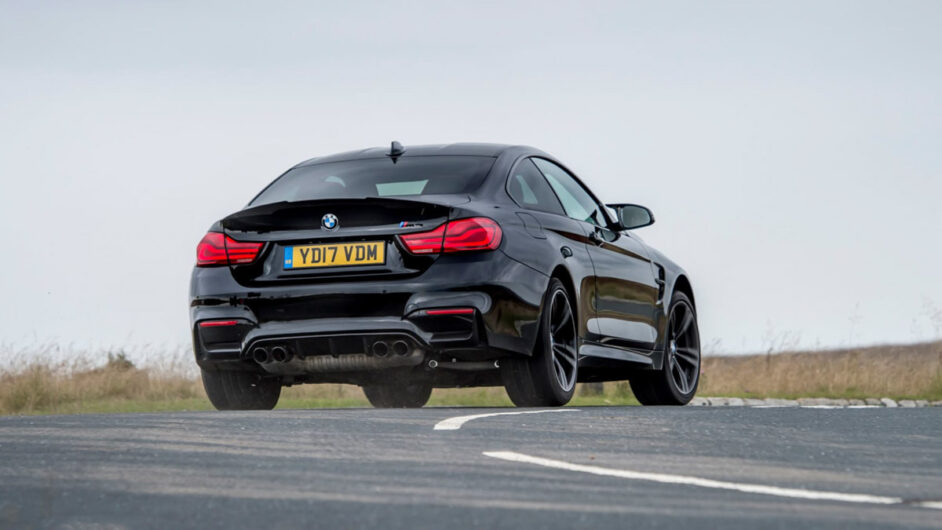
Which brings us on to the first of the M4’s weaknesses. That massive and immediate torque surge can upset the rear axle very suddenly, particularly in wet or greasy conditions. The car is traction limited in all but the driest conditions and that makes extracting all of its performance on a winding road something of a wild ride.
The chassis also lacks body control when the road begins to crest and undulate. Rather than giving the impression of being locked into the road surface, the car instead goes light at the rear axle and gives the impression of trying to break away. Again, this can make the car a real handful to drive quickly.
Even once you are keyed into the M4’s quirks, abandoning all of the driving aids is a huge leap of faith if you really want to make progress rather than showboat. The halfway-house that is the MDM mode might sometimes feel a bit restrictive but allows you to drive uninhibited, free from the fear that a sudden spike in torque or a severe bump will fire you off the road. You can then relish in the chassis’ balance; brake late into a corner and feel the rear axle become excitable as it unloads and guides the car into the corner. Get on the power just at this point and you can steer the M4 through the corner with the throttle. Keep it neat and you don’t even feel the MDM nibble away at the brakes to keep you in line and slow you down.
Although the standard cast iron brakes are more than up to the job, the optional M carbon ceramic brakes ($8265) are even better on circuit – keen trackday drivers should seriously consider these despite the significant additional outlay.
Changes made to the M4 by the $3967 Competition Package have done quite a bit to improve the standard car’s dynamics. Increased spring rate and 20-inch wheels mean the car rides more firmly, but never becomes intolerable. The payback however is that the rear of the car is much better controlled over crests and undulations. The car now copes much better with sequences of bends and humps, but is still just as agile.
The M4 GTS is an entirely different proposition to the standard M4, even with the Competition Pack. Firstly, the rear seats have been replaced with a roll cage, the fronts with Recaro bucket seats, the bonnet is carbonfibre, the exhaust is titanium and the brakes are carbon ceramics, as standard. All this contributes to a weight saving of 30kg over an ordinary M4 fitted with a DCT gearbox. Not a huge saving, but then you must consider the water tank in the back and the plumbing needed for the engine’s water injection. If 30kg simply isn’t enough then you could always choose the lightweight, carbonfibre rimmed wheels.
The GTS gets even more hardcore, still. At the rear is an adjustable wing, while at the front is a splitter with 60mm adjustment. These additions create up to 28kg of downforce at the front and 93kg at 300kph, or 12kg front and 40kg rear downforce at 200kph.
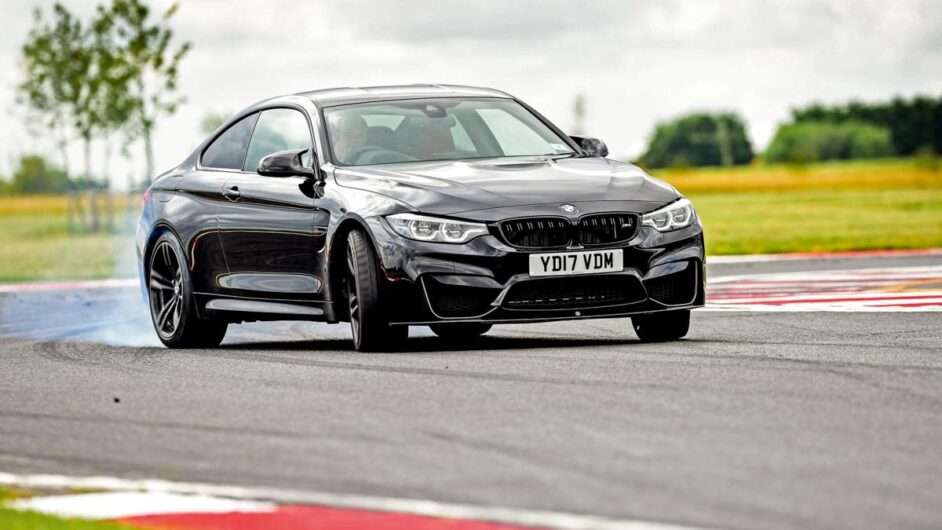
Then there’s KW coilovers all round. Ride height is adjustable and so is high- and low-speed compression damping, and rebound settings. BMW offers a recommended road and track setting, but you’re free to tailor the car’s balance and handling traits to your own tastes.
The GTS is loud. Tyre noise is prominent and the titanium exhaust sends vibrations throughout the entire car, but the hollering proper-straight-six noise that comes out the back overwhelms everything. Unlike the synthetic noise from the standard car the GTS has a real hearty tone to it. There are more pleasant exhaust noises admittedly, but few road cars emit a noise that declares such intent.
Traction in the wet is an issue in the GTS. More power and more boost than a standard M4, combined with some track-focused tyres, means that your progress is hobbled by the traction control. The engine’s spiky and aggressive delivery doesn’t fill you with the confidence to turn the systems off, either.
But when the weather is good the GTS’s chassis and steering really draws you in. There’s no denying the KW suspension is stiff but it eradicates any slack in the GTS; the body remains flat, taut and resolutely follows the road. The car’s complete loyalty to every single input means that all you have absolute certainty in the steering and brakes. After time you build up the confidence to explore the throttle with the same conviction and, once the tyres are warm, you can begin to feel the huge amount of lateral grip the car can generate. Its vast amount of torque means that there’s still throttle adjustability at almost any speed and you can then use all the controls to manipulate the GTS to do exactly what you want.
The M4 GTS was included in our 2016 car of the year test. Despite being voted first by two of the seven judges it came in joint sixth place, tying with the Alfa Romeo Giulia Quadrifoglio.
evo Tip
Those who attend a lot of trackdays should definitely consider the optional $8265 M carbon ceramic brakes. They don’t come cheap, but they really are very effective on circuit under sustained use. The previous E92 M3 was seriously hobbled by its weak cast iron brakes, and although the standard brakes on this new model are much improved, the optional carbon ceramics are even better.
It was something of a surprise when BMW confirmed that the M4 would be available with a manual gearbox – many assumed that they would be DCT only. We would choose the manual option, however, the vast majority of buyers are paying extra for the twin-clutch gearbox. The M4 GTS is DCT only, but that seems appropriate for such a track-focused car.
evo Comment
‘The new M3 and M4 are far from easy cars to assess and deliver a verdict on. The problem is that they have narrow operating windows – on dry and largely flat roads that really are superb, with incredible turn in grip and agility to burn. When the road begins to crest and undulate, or should the road be wet and greasy, they run out of body control and they become severely traction limited.
‘Cars such as this should, arguably, have broad operating windows, but the M3 and M4 are so aggressively tuned that they often feel out of their depth.’ Dan Prosser, road test editor
L/100km and running costs
The move towards turbocharging has made BMW’s M-car coupe a much more frugal car. The old M3 coupe was a serious commitment when it came to fuel costs, but now, finally the M4 is far more manageable.
BMW promises 8.3L/100km, but in reality mid-20s is much more likely on a motorway cruise. Perhaps more crucial is that pushing on in the M4 doesn’t completely cripple the average fuel consumption figure.
As for running costs, tyres are obviously expensive and given the way that the M4 delivers its torque, you will get through them. The Pilot Super Sports fitted to the car cost around $1300 a set, which is important to consider, especially if you’re planning track days.
It’s important to remember with the M4 that it needs a running in service at 1900 kilometers. Also worth noting is that the M4’s launch control system is usually activated at this service so you can use it.
Servicing costs after that depend on the package you have setup with BMW. Parts will not be cheap as it’s an M-division car so most consumables carry a premium over a standard 4-series.
Interior and tech
The M4 gets several touches that separate it out from a standard 4-series. That is, gloss carbonfibre across the dash and along the centre console. The Competition Package adds different seats with flying side-bolsters and light up M-badges. Not only do they look spectacular, the illuminated badges might be too much, but they are supportive and comfortable.
The M4’s steering wheel also looks great, avoiding the now ubiquitous flat bottom wheels seen on almost any car with even a hint of sporting pedigree. However the rim is far too think and spongy.
iDrive is arguably the best in car nav and entertainment system on the market right now. Controlled either via the steering wheel or using a clickwheel positioned on the transmission tunnel, it’s easy to use and the wide screen high-resolution display is clear in any condition.
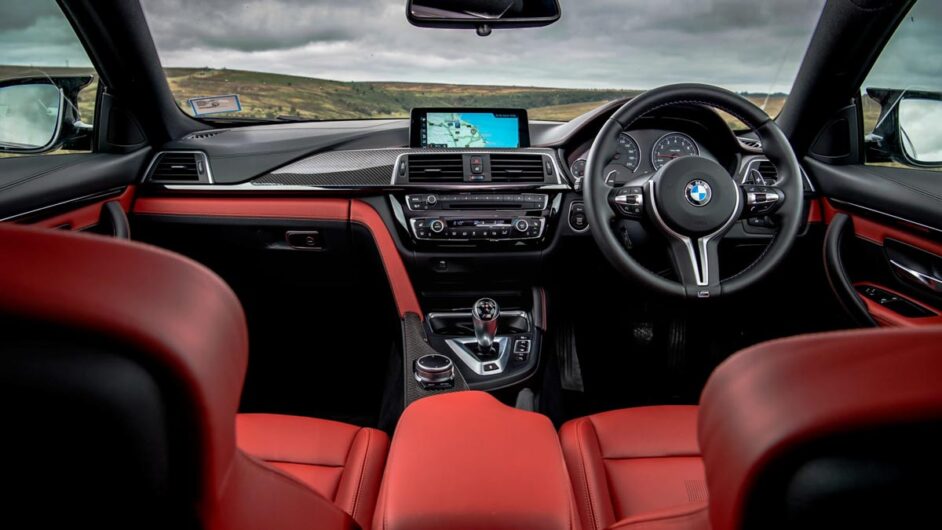
$890 options a Harman Kardon sound system onto the M4. It’s not the best optional audio package on the market, but definitely gives a boost to the sound setup in the car. It’s also cheaper than some of the competitions’.
Other tech includes internet connection, web-based music browsing and a heads up display. The latter was fitted to the BMW M4 that we ran for a year on our Fast Fleet, and is definitely worth considering. The rest add little to the user experience and won’t do anything for residual values if you come to sell the car.
BMW now also has a ‘M Power’ app, which can be connected up to iDrive in the M4. The app will show GPS position, speed, acceleration and lateral acceleration. It’s a simple and cleverly integrated solution for recording lap times.
Design
The M4 works hard to seperate itself out from a 4-series. The ‘powerdome’ hood returns, while the front end features a completely new look set of air inlets for the twin-turbo straight six engine.
Mirrors, kindey grilles and M4 badging everywhere further highlight the M4’s sporting credentials. The back end of the vehicle features a set of quad tailpipes, now synomous with M-division vehicles.
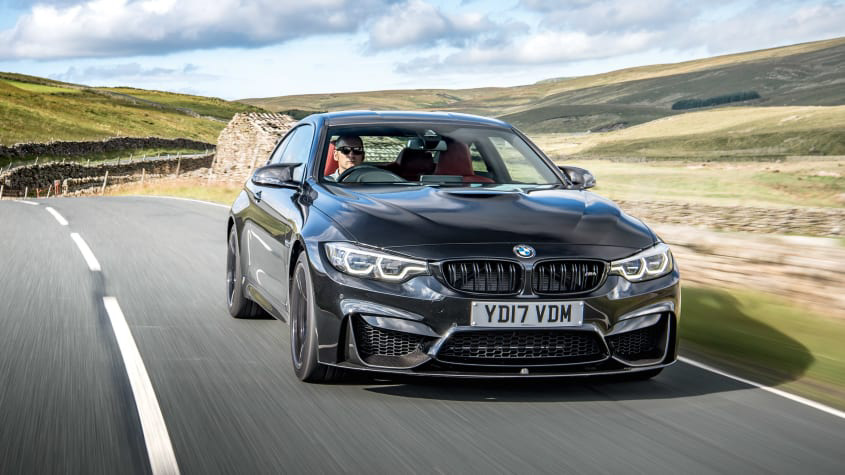
For those still not content that their M4 looks sporting enough, colour choices range from black and grey, to the far brighter Austin Yellow and Yas Marina blue. Those who option carbon ceramic brake discs also get a set of gold calipers.
Wheel choices range from 19-inch black and silver M-Sport wheels to a smaller gloss silver 18-inch offering.
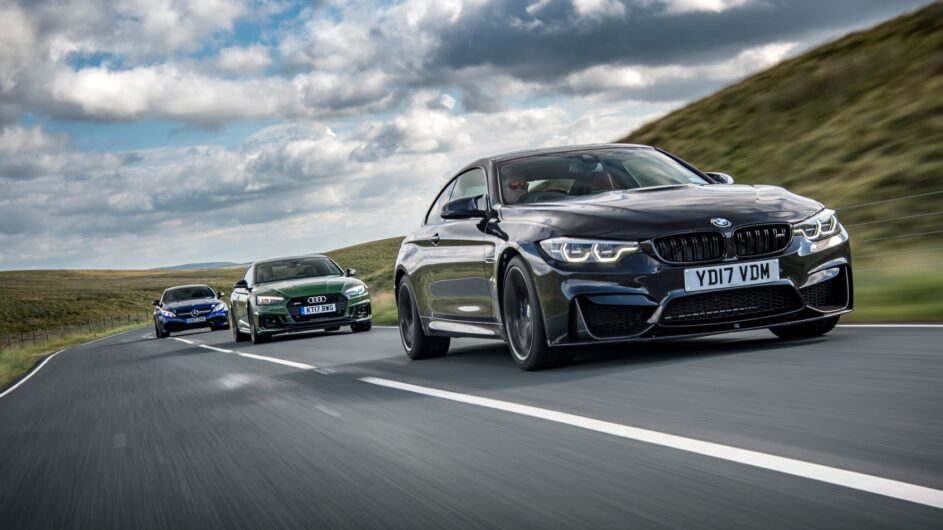
Since its introduction BMW’s M4 has struggled to find favour to some extent – on the right roads (smoothly surfaced) and in the right conditions (dry) – it’s always been wonderful but when the going gets tough the regular M4 has often been a wayward companion. With this in mind it was with some trepidation that the latest Competition Pack-equipped M4 was pitched head-to-head with Audi’s new RS5 and Mercedes-AMG’s C63 S.
The Competition Pack has transformed the M4 though, and it had little trouble in impressing with its power delivery, ballistic pace, light weight, agility and poised handling.
Weights, dimensions and performance data
It’s a little bizarre referring to the BMW M4 as a featherweight at 1645kg, but it’s over 150kg lighter than the Audi RS5 and over 200kg trimmer than the AMG. Despite this the M4 was the slowest of this trio to 100kph in our tests (taking 4.4sec versus 4.3 for the AMG and a bonkers 3.6 for the Audi). The RS5’s four-wheel drive made it unbeatable while the AMG’s 60bhp power advantage helped it beat the M4.
A lack of traction hinders the M4 off the line but by the time 241kph was reached the BMW had caught the Mercedes and was a significant two seconds faster than the RS5.
Lap time and track driving
Given the M4’s spiky reputation one might have thought it would struggle on Bedford’s West Circuit but it was comfortably faster than both the RS5 and the C63 S, eclipsing their times by 1.6 and 2.2sec respectively. The M4’s lighter weight is a big advantage on track and while it could become rather lairy with the traction control switched off if you’re neat and tidy it’s hugely rewarding.
In the tighter turns it tended to suffer from more understeer than its rivals but through the quicker corners the M4 was markedly faster allowing it to press home its advantage on the following straights.
Supertest data and specs table
| BMW M4 Comp Pack | Audi RS5 | Mercedes-AMG C63 S | |
| Engine | Straight-six, 2979cc, twin-turbo | V6, 2894cc, twin-turbo | V8, 3982cc, twin-turbo |
| Power | 444bhp @ 7000rpm | 444bhp @ 5700-6700rpm | 503bhp @ 5500-6250rpm |
| Torque | 406lb ft @ 1850-5000rpm | 442 lb ft @ 1900-5000rpm | 516lb ft @ 1750-4500rpm |
| Transmission | Seven-speed dual-clutch (option), rear-wheel drive, LSD | Eight-speed auto, four-wheel drive, electronically controlled rear LSD | Seven-speed MCT auto, rear-wheel drive, electronically controlled LSD |
| Tyres | 255/35 R19 front, 275/35 R19 rear, Michelin Pilot Super Sport | 275/30 R20 front, 275/30 R20 rear, Hankook Ventus S1 Evo 2 | 255/40 R19 front, 285/35 R20 rear, Michelin Pilot Super Sport |
| Height/width | 1392mm/1870mm | 1360mm/1861mm | 1400mm/1877mm |
| Weight | 1645kg as tested (1585kg claimed) | 1799kg as tested (1655kg claimed) | 1847kg as tested (1725kg claimed) |
| Power-to-weight | 274bhp/ton using test-car weight (285bhp/ton claimed) | 251bhp/ton using test-car weight, (273bhp/ton claimed) | 277bhp/ton using test-car weight (296bhp/ton claimed) |
| 0-100kph | 4.4sec as tested (4.0 to 62 claimed) | 3.6sec as tested (3.9 to 62 claimed) | 4.3sec as tested (3.9 to 62 claimed) |
| Top speed | 250kph (limited) | 280kph (optional raised limiter) | 250kph (limited) |
| evo L/100km | 13.3 (average over duration of test) | 14.4 (average over duration of test) | 17.1 (average over duration of test) |
| Basic price | $82,103 | $83,188 | $123,112 |
| PCP monthly price | $1138 (36 months, $10,600 deposit, 16,000 kilometers per annum limit) | $1101 (36 months, $10,600 deposit, 16,000 kilometers per annum limit) | $1192 (36 months, $10,600 deposit, 16,000 kilometers per annum limit) |
Video review
This article originally appeared at evo.co.uk
Copyright © evo UK, Dennis Publishing


